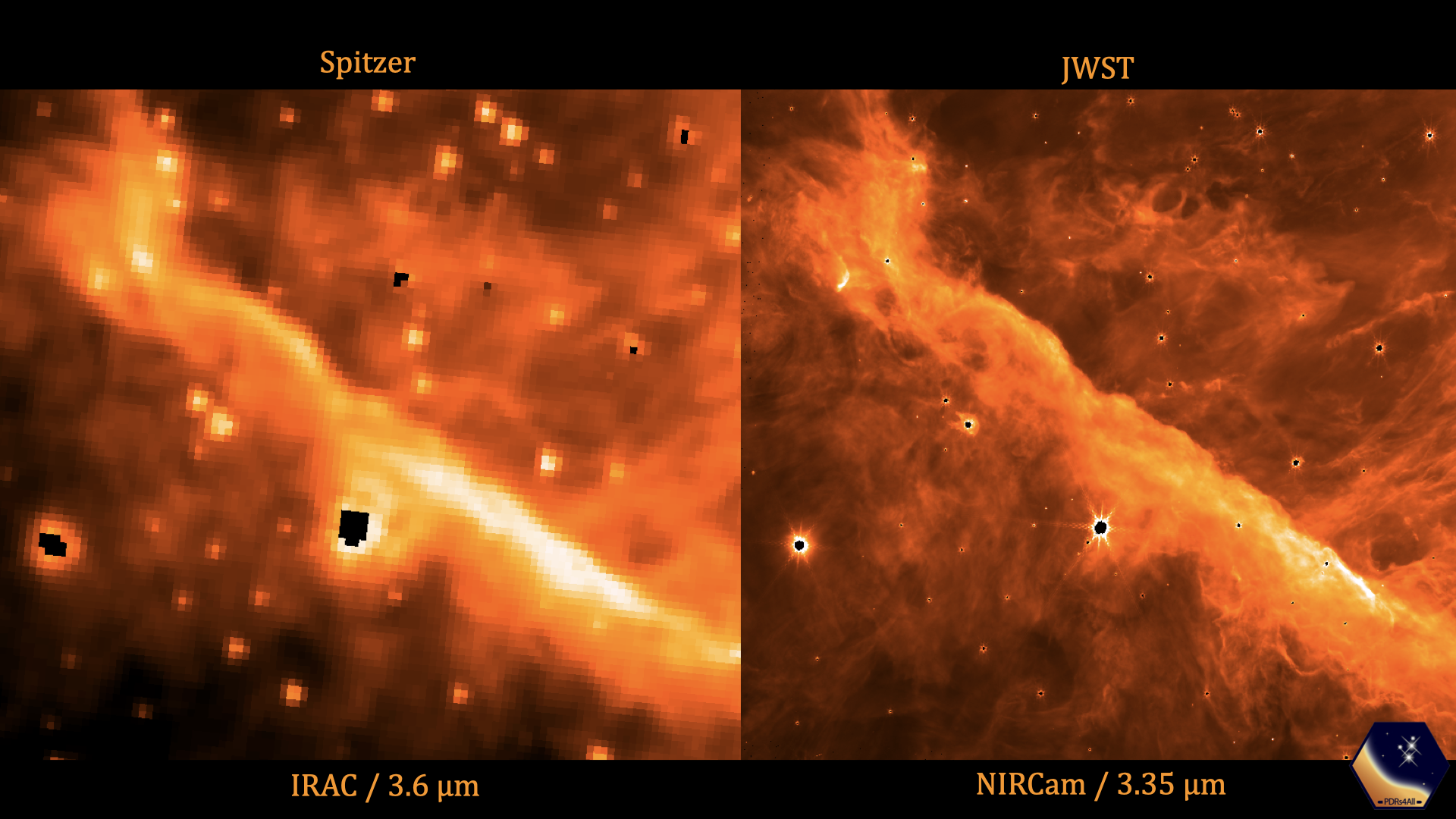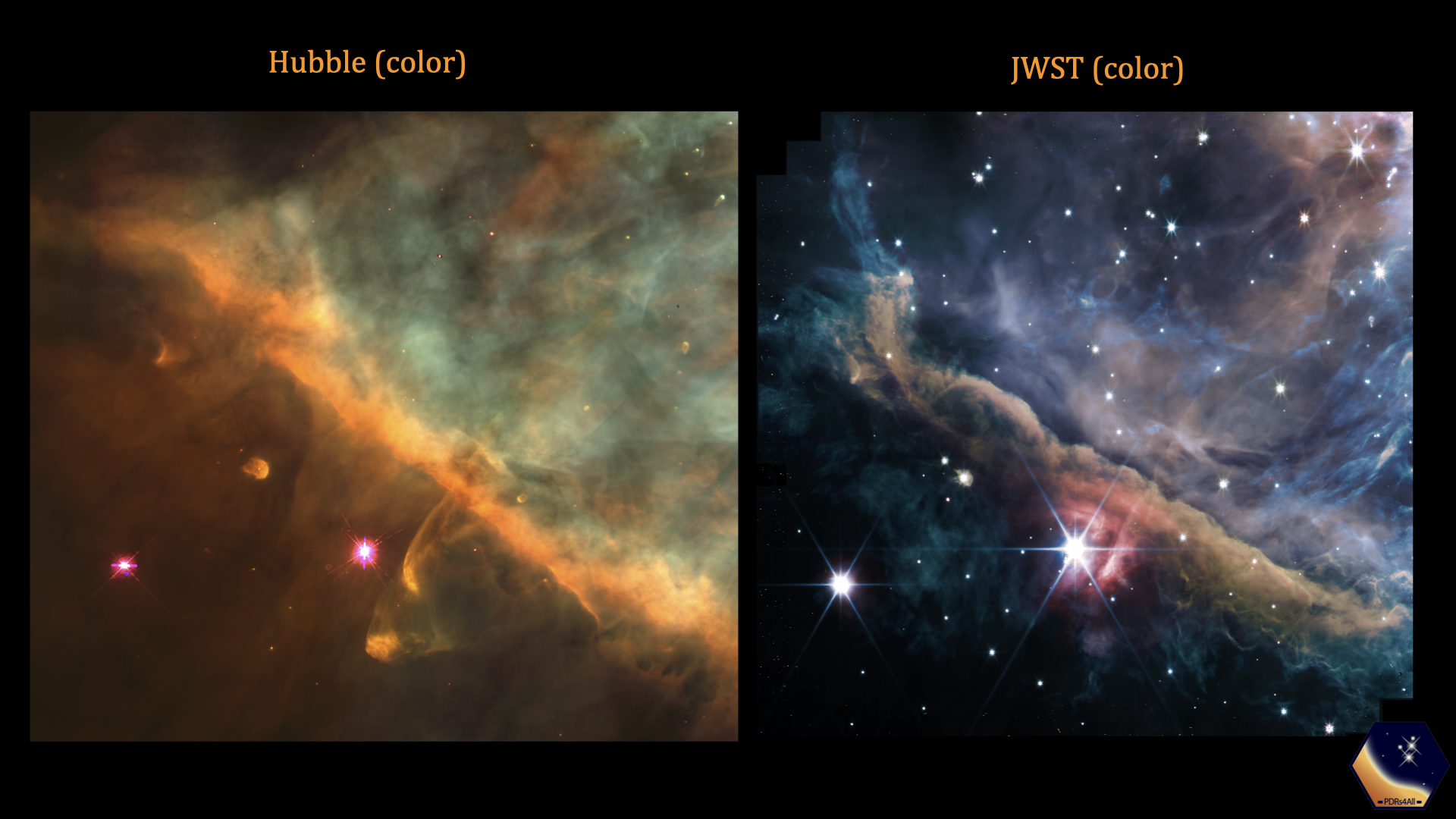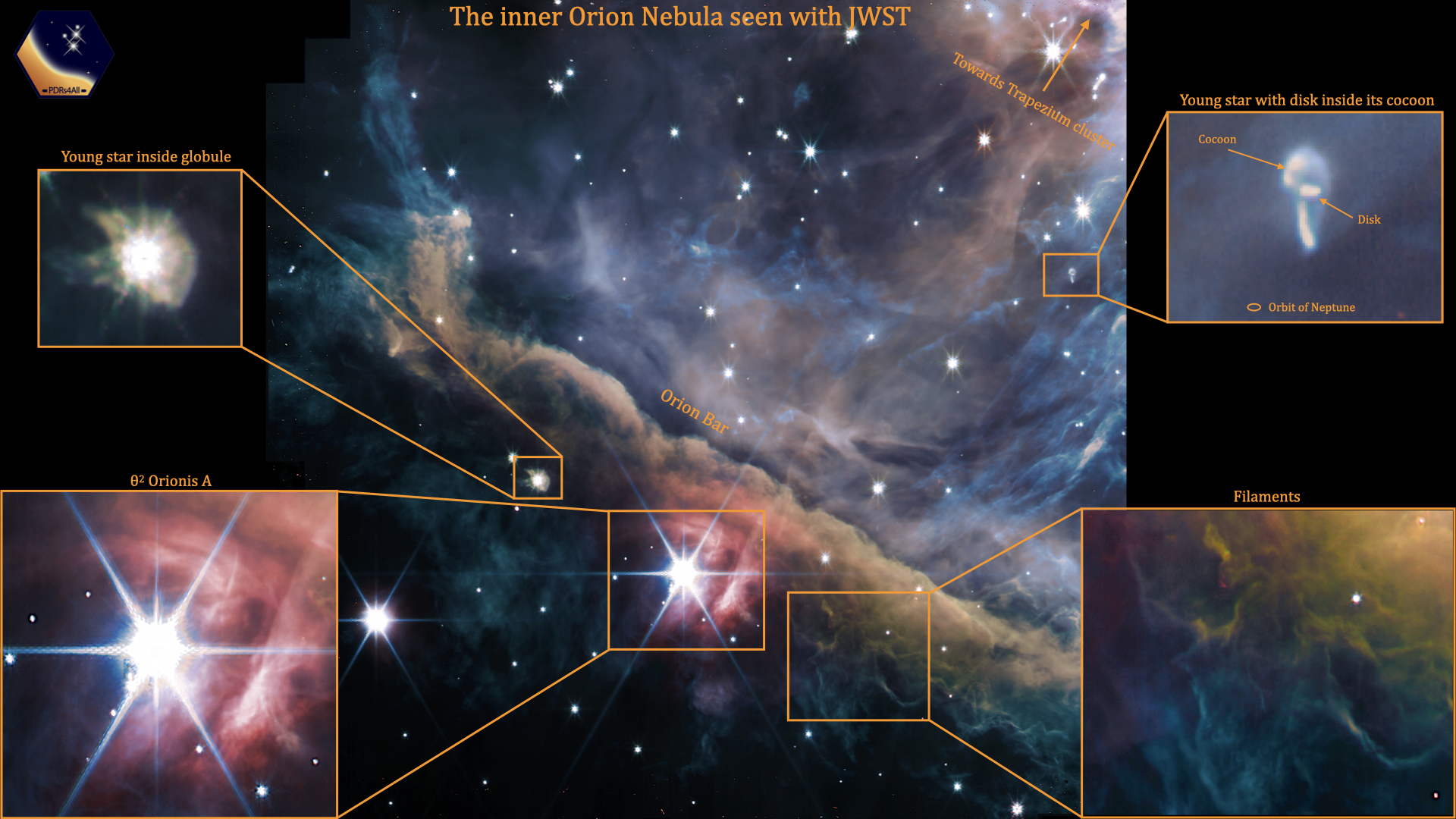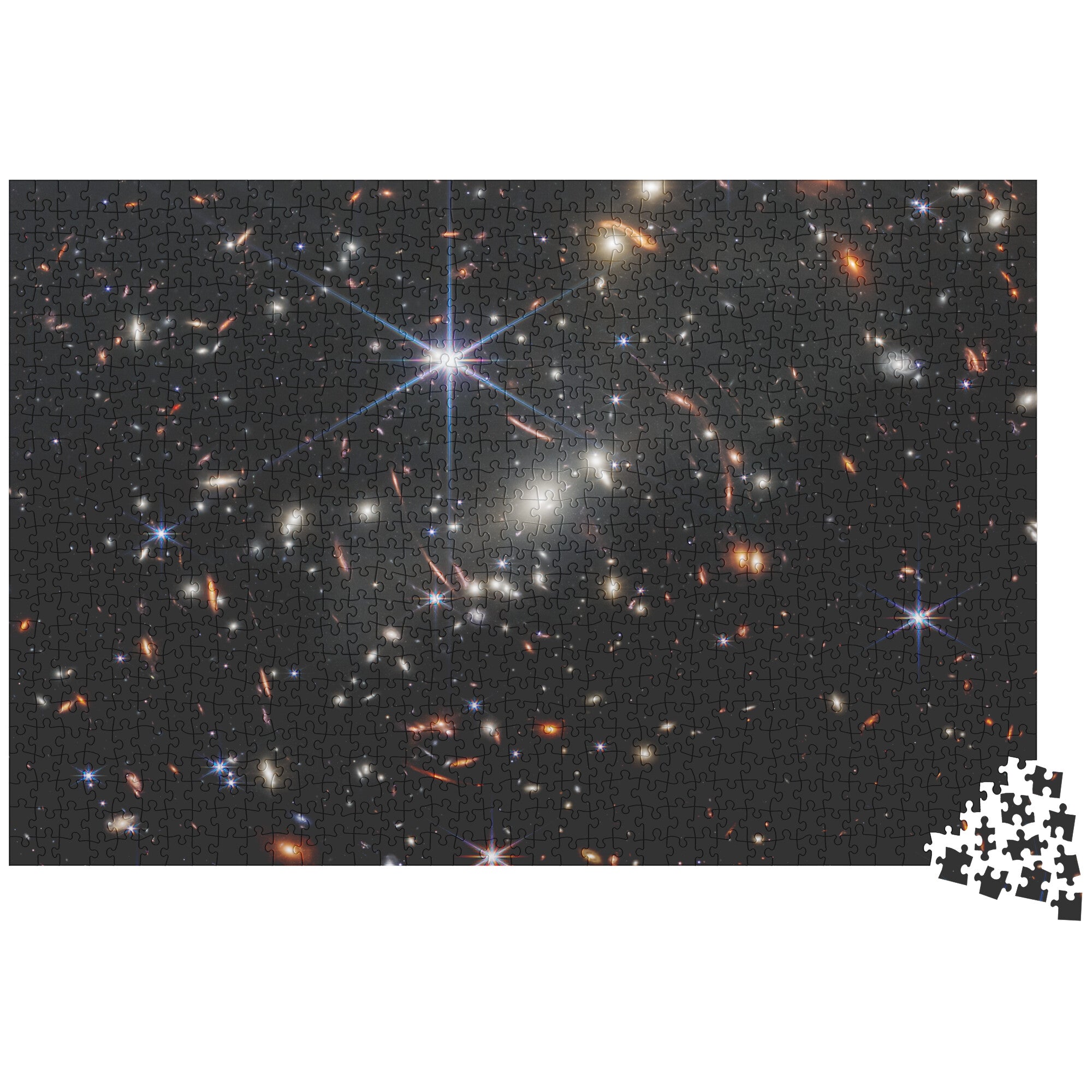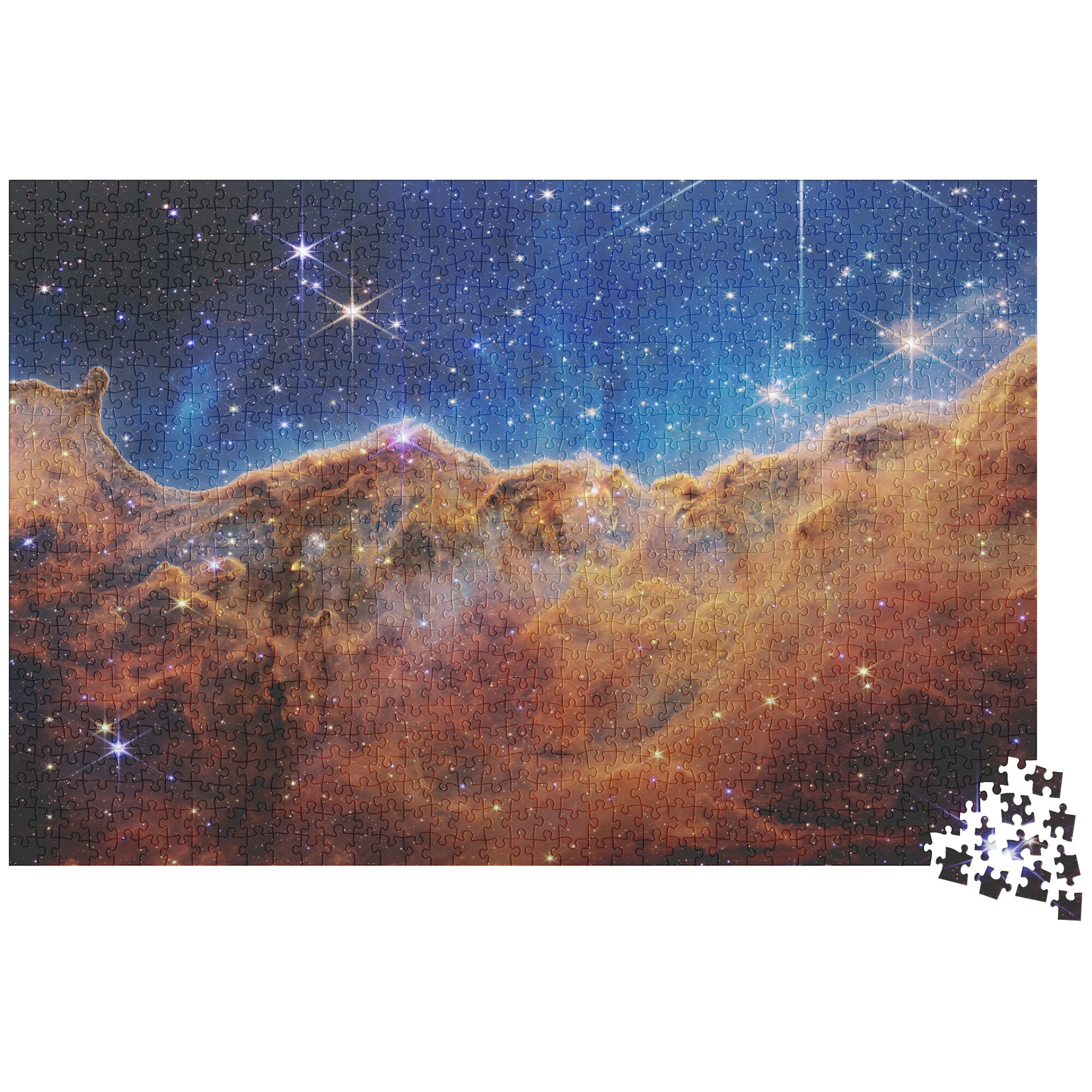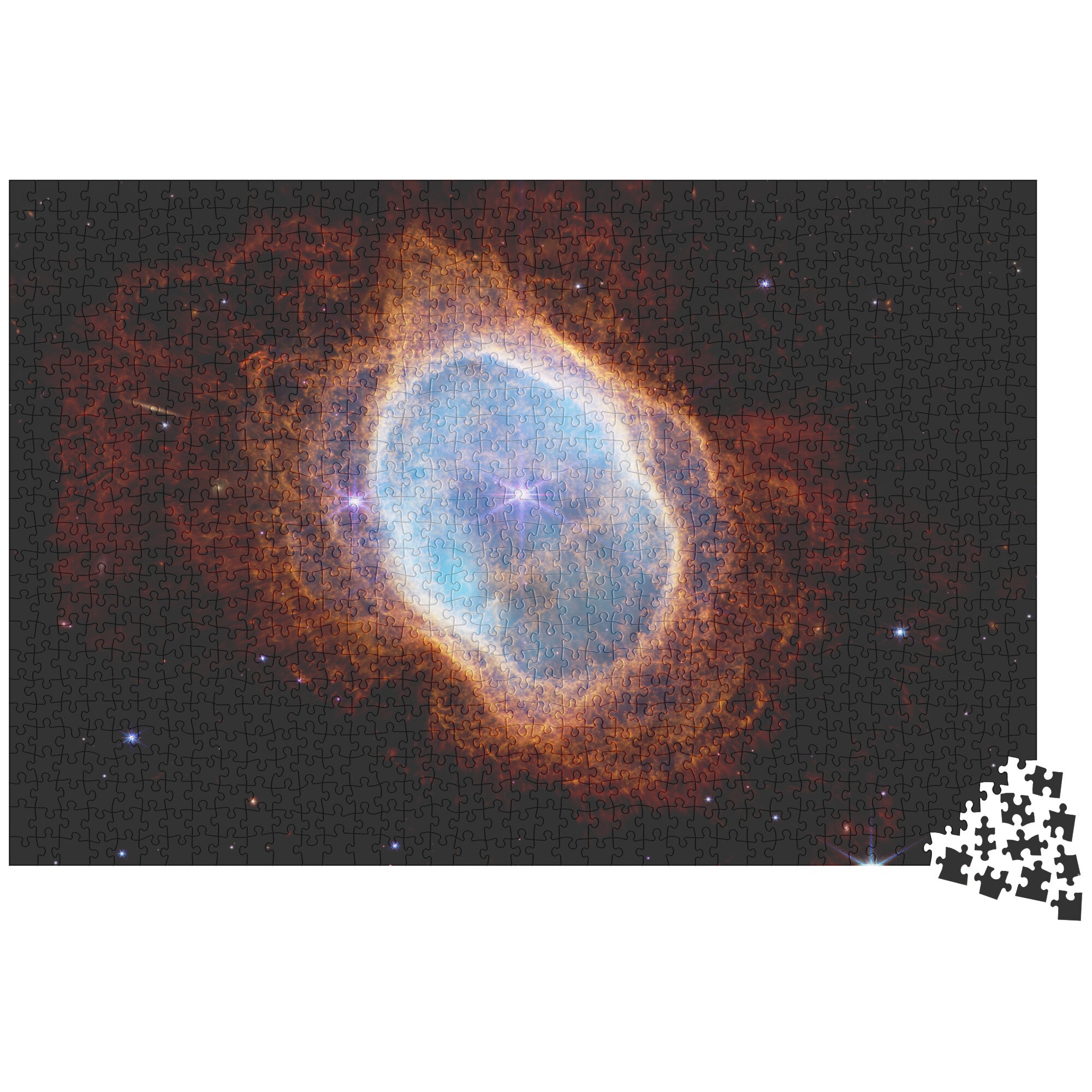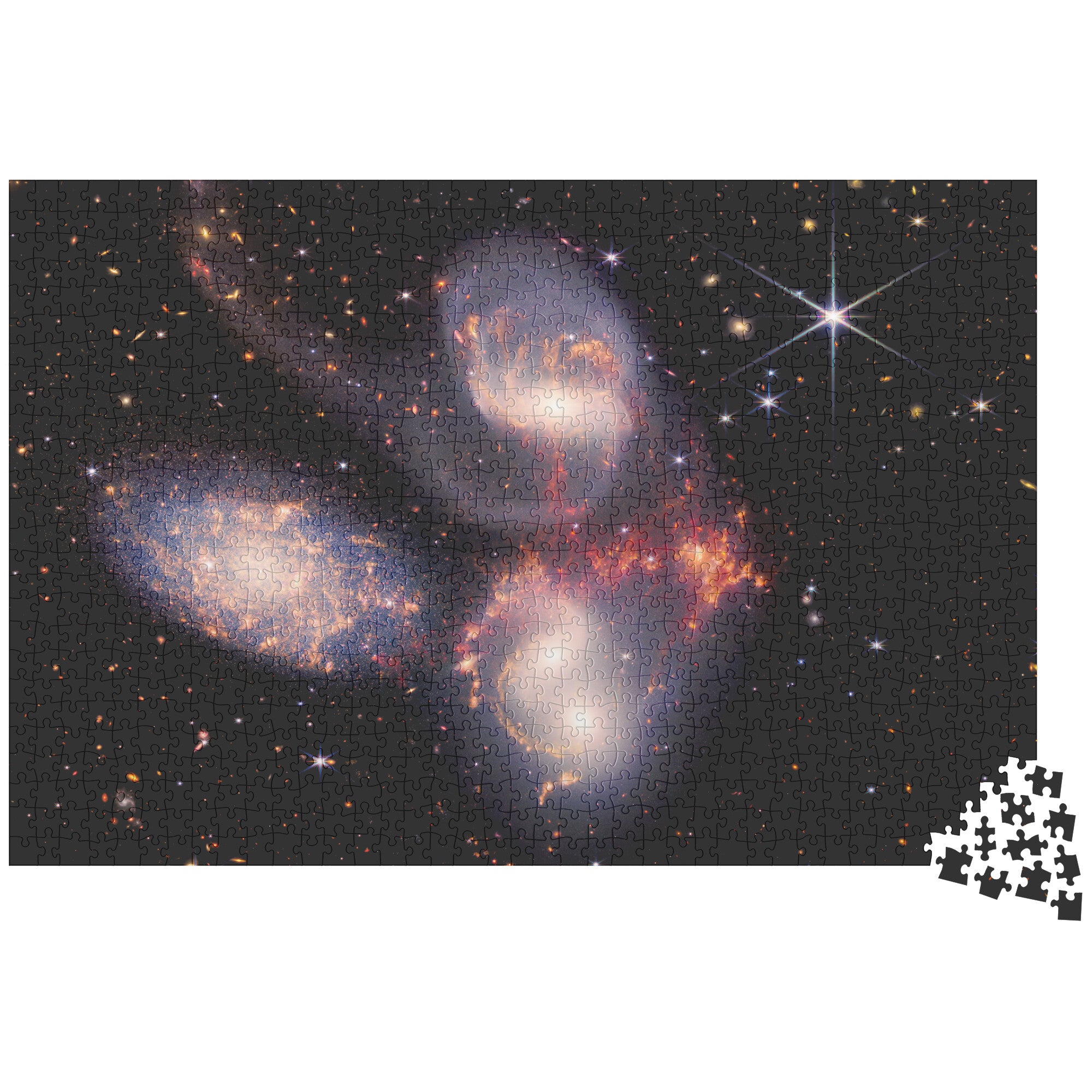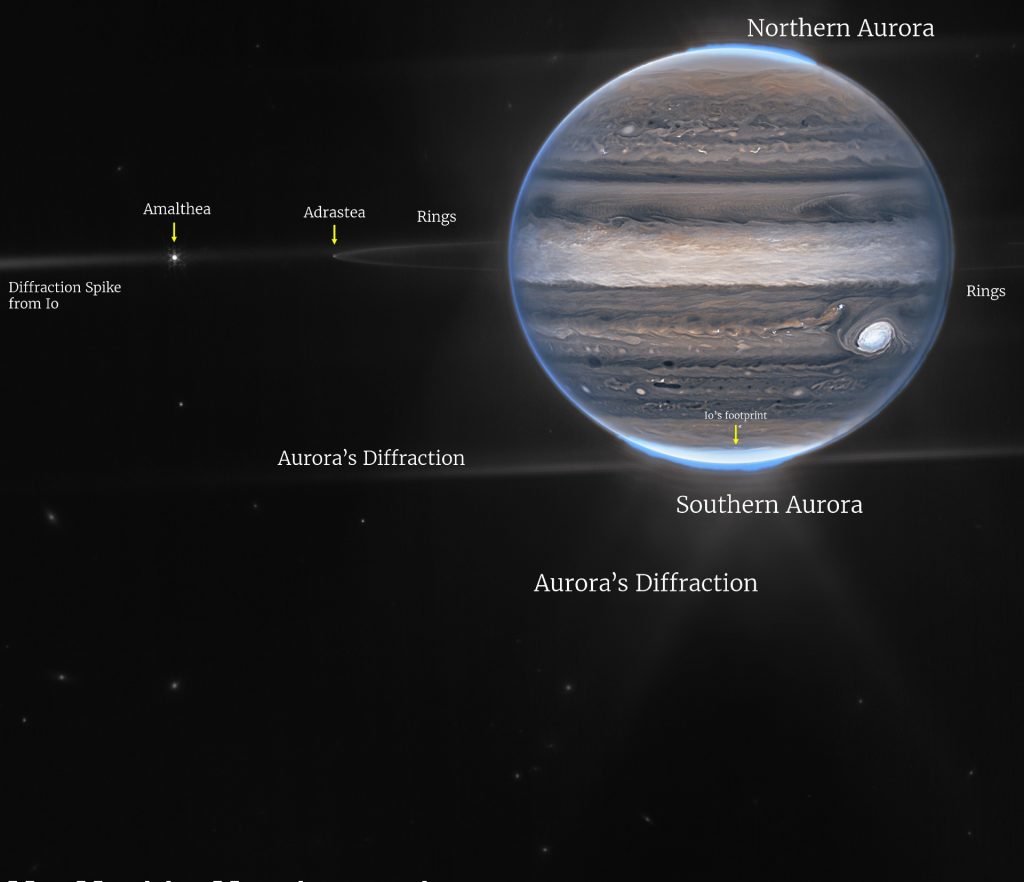The James Webb Space Telescope Feed
The most extensive source of information about James Webb Space Telescope. JWST Feed contains every single piece of data from the telescope, and is updating live every few minutes. Our goal is to make the full JWST data accessible for the public.
- Search
- Filter
- Feed
The assembly of dusty galaxies at $z \geq 4$: the build-up of stellar mass and its scaling relations with hints from early JWST data
PDRs4All | Plate showing images of the Orion Nebula, corresponding to the 4 detectors, from the NIRCam instrument of the James Webb telescope, before their combination. (NASA / ESA / CSA / PDRS4ALL TEAM / AMELIE CANIN)
/2022/09/22/phpUwu62i.png)
PDRs4All | Image of the Orion Nebula for the F187N filter of one of the four detectors of the NIRCam instrument, an instrument of the James Webb Space Telescope, once the noise has been subtracted from the raw image. (NASA / ESA / CSA / PDRS4ALL TEAM / AMELIE CANIN)
/2022/09/22/php6klJpm.png)
PDRs4All | Raw image of the Orion Nebula for the F187N filter of one of the four detectors of the NIRCam instrument, which is one of the instruments of the James Webb Space Telescope. (NASA / ESA / CSA / PDRS4ALL TEAM / AMELIE CANIN)
/2022/09/22/phpE1IOml.png)
PDRs4All | Northern region of M42 observed with detector A of NIRCam during observation of the Orion Bar
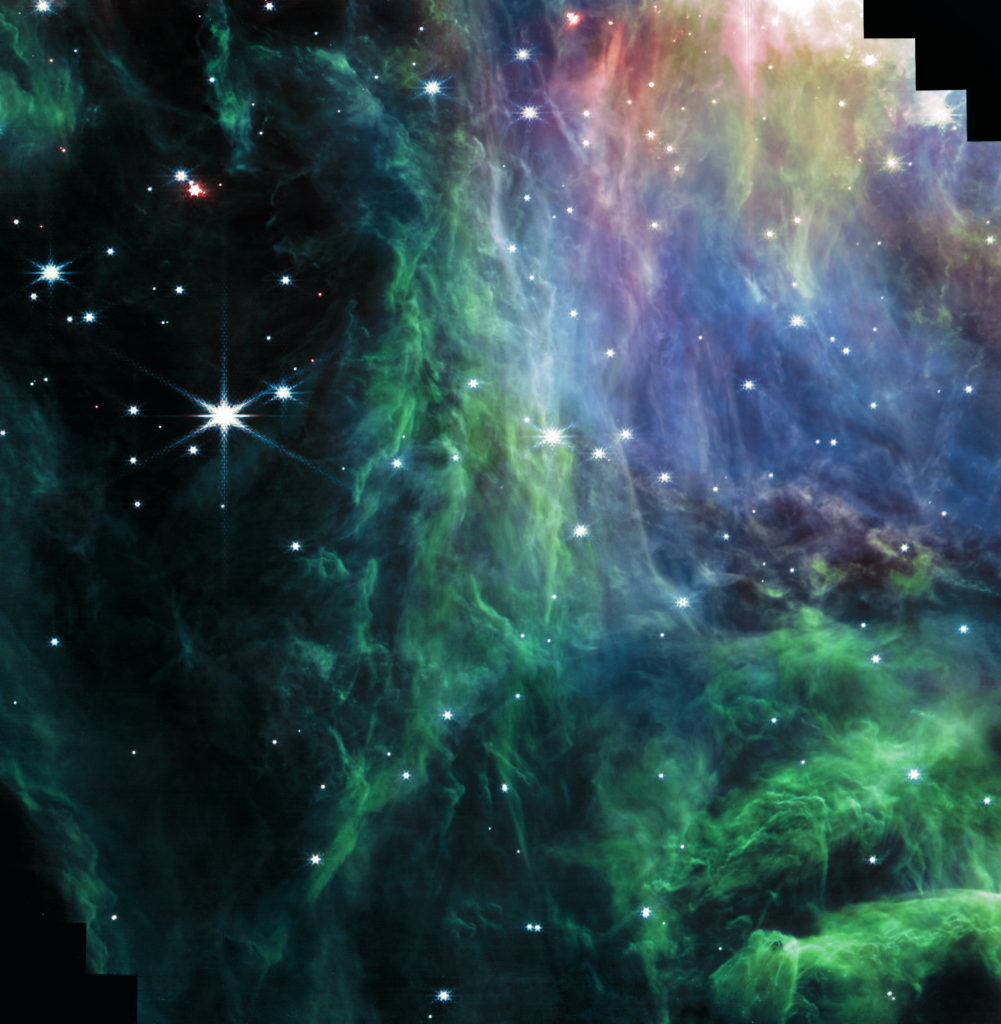
PDRs4All | Zoom-in on the NIRSpec field of view from Fig. 1. Blue: NIRSpec footprints corresponding to planned observations. Black: field of view of the simulation. Green: adopted field of view for the NIRSpec simulated cube.
PDRs4All | NIRSpec field of view for the PDRs4all project as specified in the ERS 1288 APT file, with HST-WFC3 (Kimble et al. 2008) with the F656N filter (6.56µm) image of the Orion star forming region in background. Blue regions: NIRSpec footprints corresponding to planned observations. Red cross: position of the target at the coordinates R.A. = 5:35:20.4749, dec. = -5:25:10.45.
PDRs4All | Rudimentary example of a colorized image of the Orion Nebula, combining three filters from the James Webb Telescope's NIRCam instrument. (NASA / ESA / CSA / PDRS4ALL TEAM / AMELIE CANIN)
/2022/09/22/phpWoTSNT.png)
PDRs4All | Plate of three images of the Orion Nebula, taken with the NIRCam instrument. The first corresponds to the f187n filter, the second to the f277w filter and the third to the f335m filter. (NASA / ESA / CSA / PDRS4ALL TEAM / AMELIE CANIN)
/2022/09/22/phpcHnFs8.png)
PDRs4All | "Final" image of the Orion Nebula, taken by the NIRCam instrument of the James Webb Telescope, for the F187N filter. (NASA / ESA / CSA / PDRS4ALL TEAM / AMELIE CANIN)
/2022/09/22/phpa45OiN.png)
PDRs4All | The inner region of the Orion Nebula as seen by the James Webb Space Telescope’s NIRCam instrument.

JWST's PEARLS: Prime Extragalactic Areas for Reionization and Lensing Science: Project Overview and First Results
Metal-Enriched Neutral Gas Reservoir around a Strongly-lensed, Low-mass Galaxy at $z=4$ Identified by JWST/NIRISS and VLT/MUSE
First Sample of H$α$+[O III] $λ$5007 Line Emitters at $z > 6$ through JWST/NIRCam Slitless Spectroscopy: Physical Properties and Line Luminosity Functions
High-Resolution spectral models of TRAPPIST-1e seen as a Pale Blue Dot for ELT and JWST observations
The JWST Early Release Science Program for Direct Observations of Exoplanetary Systems II: A 1 to 20 Micron Spectrum of the Planetary-Mass Companion VHS 1256-1257 b
A JWST/NIRCam Study of Key Contributors to Reionization: The Star-forming and Ionizing Properties of UV-faint $z\sim7-8$ Galaxies
Direct Observations of Exoplanetary Systems I: High Contrast Imaging of the Exoplanet HIP 65426 b from 2-16 µm

Direct Observations of Exoplanetary Systems I: High Contrast Imaging of the Exoplanet HIP 65426 b from 2-16 µm

The JWST Early Release Science Program for Direct Observations of Exoplanetary Systems I: High Contrast Imaging of the Exoplanet HIP 65426 b from 2-16 $μ$m
Utilizing a global network of telescopes to update the ephemeris for the highly eccentric planet HD 80606 b and to ensure the efficient scheduling of JWST
GOALS | Fig.1 from Evans et al. 2022 showing false color, multi-band HST (left) and JWST/MIRI (right) images of the merging LIRG VV114.

Morphologies of Galaxies at $z \simeq 9-17$ Uncovered by JWST/NIRCam Imaging: Cosmic Size Evolution and an Identification of an Extremely Compact Bright Galaxy at $z\sim 12$
An upper limit on [OIII] 88 $μ$m and 1.2 mm continuum emission from a JWST $z \approx 12-13$ galaxy candidate with ALMA
Balancing the efficiency and stochasticity of star formation with dust extinction in z > 10 galaxies observed by JWST
GOALS | JWST/NIRCAM color composite image of the merging galaxy VV114, showing large numbers of extremely red, star forming clumps and the dusty hidden nuclei of VV114E (image credit: NASA/ESA, processing: R Colombari)

Morpheus Reveals Distant Disk Galaxy Morphologies with JWST: The First AI/ML Analysis of JWST Images
Cosmic Spring | JWST image of galaxy cluster WHL0137-08 lensing Earendel and the Sunrise Arc. Observed in 8 NIRCam filters. Color image by Trilogy + post-processing. cosmic-spring.github.io
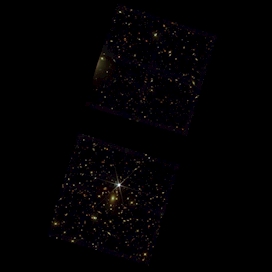
Extreme Value Statistics of the Halo and Stellar Mass Distributions at High Redshift: are JWST Results in Tension with ΛCDM?
Giant Planet Systems | This false-color composite image of Jupiter was obtained July 27 with the NIRCam instrument on board the JWST. Jupiter’s faint rings — a million times dimmer than the planet — and two of its small satellites, Amalthea (left) and Adrastea (dot at edge of ring), are clearly visible against a background of distant galaxies. The diffraction pattern created by the bright auroras and the moon Io (to the left out of the image), form a complex background of scattered light around Jupiter. (Image credit: NASA, European Space Agency, Jupiter Early Release Science team. Image processing: Ricardo Hueso [UPV/EHU] and Judy Schmidt).
![Giant Planet Systems | This false-color composite image of Jupiter was obtained July 27 with the NIRCam instrument on board the JWST. Jupiter’s faint rings — a million times dimmer than the planet — and two of its small satellites, Amalthea (left) and Adrastea (dot at edge of ring), are clearly visible against a background of distant galaxies. The diffraction pattern created by the bright auroras and the moon Io (to the left out of the image), form a complex background of scattered light around Jupiter. (Image credit: NASA, European Space Agency, Jupiter Early Release Science team. Image processing: Ricardo Hueso [UPV/EHU] and Judy Schmidt).](https://user-images.githubusercontent.com/4047392/185948801-4ae3bd47-718c-4248-8f72-b45da7d401d4.png)
Giant Planet Systems | This July 27 image of Jupiter taken by the Near-Infrared Camera on the new James Webb Space Telescope is artificially colored to emphasize stunning details of the planet: auroral emission from ionized hydrogen at both the north and south poles (red); high-altitude hazes (green) that swirl around the poles; and light reflected from the deeper main cloud (blue). The Great Red Spot, the equatorial region and compact cloud regions appear white or reddish-white; regions with little cloud cover appear as dark ribbons north of the equatorial region. (Image credit: NASA, European Space Agency, Jupiter Early Release Science team. Image processing: Judy Schmidt)

Rogue planets and brown dwarfs: Predicting the populations of free-floating planetary mass objects observable with JWST




